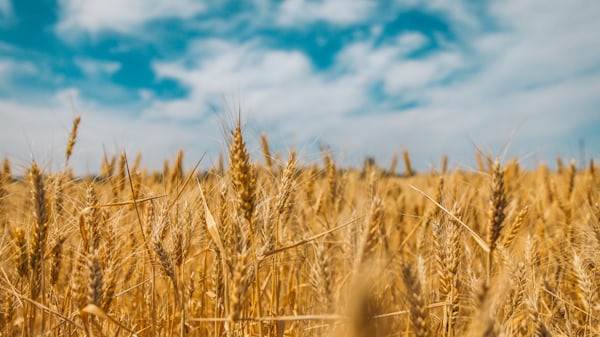Russia, COVID, Inflation: Commodities Trading Strategies Toward Q2-2022
Late this past January, ‘Mad Money’ host Jim Cramer broke down DeCarley Trading co-founder Carley Garner’s analysis on “a positive outlook for a range of asset classes,” including commodities. In spite of the Federal Reserve’s declaring its tightening (and eventually, ending) its monthly bond purchases in 2022, Cramer stated that Garner’s interpretation of “the charts and the history…suggest that 2022 could be a strong year for most commodities, the bond market, and even the stock market,” citing momentum resulting from spending since the onset of the pandemic could continue driving these classes of assets higher.
Garner’s analysis, focusing primarily on the Fed’s easing and subsequently-planned cessation of spending later in 2022, would flag the end of its current era of quantitative easing; an unconventional policy introduced following the 2008 financial crisis that, “could only be justified as a means to avoid complete economic devastation,” Garner said on DeCarley’s website. Through stimulating the economy over the past few years, quantitative easing has resulted in what Garner describes as, “a significant increase in the supply of money…the more money there is…the higher asset prices tend to be.”
With this in mind, it’s also worth noting that several other factors besides the Fed’s slowing pace of monthly bond purchases — such as Russia’s recent aggression against Ukraine and inflation — could potentially affect the trading of commodities moving into 2022’s second quarter. Here’s how.
The Russian affair
Commodity traders have little reason to worry over Russia’s recent aggression towards its neighbor Ukraine. According to an analysis from Bloomberg, easing tensions between Russia — a major exporter of crude oil — and Ukraine — a world leader in grain exports — is likely to “cure higher prices, with severe detriments to Russia vs. potential benefits to North America,” which remains a global hub of agriculture and energy production. Additionally, these factors are bound to contribute to Russia’s reluctance to launch a full invasion of Ukraine, keeping stock prices stable.
In the event that Russia does invade Ukraine, equities would witness a drop. However, commodity prices — particularly oil — would be sent even higher, potentially over $100 per barrel, spurred by a surge in prices across European markets. Furthermore, prices of precious metals which Russia is a leading exporter of, as well as prices of wheat from Ukrainian and Russian exports alike, would cause even more inflation.
Should an invasion take place, the price of these commodities would spike, prompting traders to sell at their highest point in years. Although most experts cite the potential for an invasion at 50% or less, this largely depends on what sanctions against Russia are proposed and ultimately enacted, and when—if at all.
Lingering COVID impacts
Late last year, the emergence of the highly-contagious Omicron COVID-19 variant put a dent in the projected pace of recovery in oil demand. Several months later, this is likely to hold true, although oil’s recovery trajectory is expected to remain on track to reach its pre-COVID levels by the conclusion of 2022.
Additionally, many of the global supply chain bottlenecks initially caused by the pandemic’s onset and subsequent spread in Spring of 2020 are still present in many commodity markets including energy, metals, and agriculture. These tightened supplies have continued to send commodity prices higher throughout 2021 and are likely to continue throughout the second quarter of 2022.
Even with tension on these supply chains projected to ease later this year, prices are expected to remain high — though not as high as seen in 2020 or 2021 — due in no small part to increased rates of inflation. While commodity yields are not projected to be as immense as the previous two years, their supply will continue to outweigh demand well into the future.
The “inflation” question
Returning to the Federal Reserve, most investors expect inflation to steady out around 3.5% for 2022. Though higher than the Fed’s target of 2%, it is still a significant drop from 2021’s 7% rate, and is anchored in the Fed’s proposal to increase interest rates from Treasury yields three times throughout 2022. This, coupled with the Fed’s tapering of bond-buying, is expected to help further stimulate the US’s macroeconomic performance in the coming years.
For commodities, particularly those currently seeing higher prices, this has created market backwardation. For instance, according to CME Group, futures contracts on commodities such as corn and soybeans that expire in 2023 are currently trending approximately 7% lower than futures contracts expiring in March of this year. The same is true for most energy commodities like gasoline, as well as metals such as hot-rolled coiled steel. As a result, commodity traders looking to capitalize on current high prices should look towards the near — rather than far — future to do so. With inflation rates projected to decline and steady out in late 2022 and beyond, cashing in on currently higher rates sooner rather than later will yield higher overall returns.




